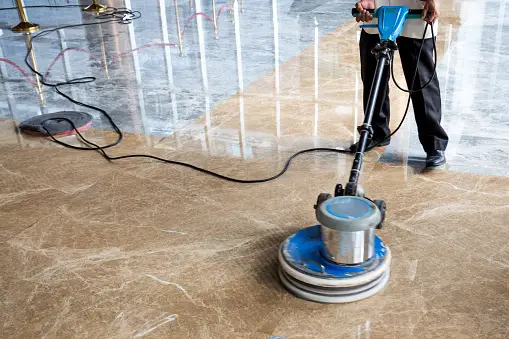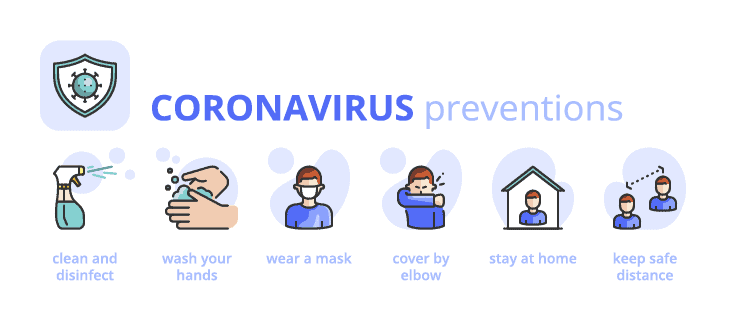
The Importance of Regular Dusting for Residential and Commercial Spaces
Date Posted:
March 7, 2024
Dusting often seems like a mundane chore, but its importance cannot be overstated, especially for both residential and commercial spaces. Beyond just maintaining appearances, regular dusting plays a crucial role in promoting health, cleanliness, and overall well-being. In this article, we’ll delve into why consistent dusting is essential for creating healthier and more pleasant environments for living and working.
Health Benefits of Regular Dusting
Regular dusting is vital for improving indoor air quality and reducing the presence of allergens and irritants. Dust accumulation can exacerbate respiratory issues and allergies, leading to discomfort and health complications. By dusting surfaces regularly, one can minimize these risks and create a healthier environment for inhabitants and visitors alike. Additionally, dusting helps prevent the spread of germs and bacteria, contributing to overall hygiene and well-being.
Maintaining Cleanliness
Apart from health benefits, regular dusting also plays a significant role in maintaining cleanliness. Dust accumulation not only affects the appearance of a space but also contributes to unpleasant odors and the deterioration of surfaces over time. By dusting regularly, one can enhance the aesthetic appeal of the environment, eliminate foul smells, and prolong the lifespan of furniture and other surfaces.
Efficiency and Productivity
In both residential and commercial settings, cleanliness directly impacts efficiency and productivity. A clean and tidy space minimizes distractions, allowing individuals to focus better on tasks at hand. Whether it’s a home office or a bustling commercial establishment, regular dusting creates a conducive environment for work and living, promoting overall well-being and satisfaction among occupants.
Tools and Techniques for Effective Dusting
To achieve optimal results, it’s essential to employ the right tools and techniques for dusting. Choosing appropriate cleaning products and equipment is crucial for effectively removing dust and dirt from surfaces without causing damage. Additionally, implementing proper dusting techniques ensures thorough cleaning and prevents the redistribution of dust particles into the air.
Frequency of Dusting
The frequency of dusting depends on various factors, including the level of traffic, indoor activities, and environmental conditions. Establishing a regular dusting schedule is key to maintaining cleanliness consistently. By assessing specific needs and adjusting the frequency accordingly, one can ensure that dusting efforts are effective in addressing potential health hazards and cleanliness concerns.
Dusting Tips for Residential Spaces
In residential settings, dusting should be incorporated into regular cleaning routines. A room-by-room dusting guide can help ensure thorough cleaning, targeting commonly overlooked areas such as ceiling fans, light fixtures, and baseboards. By staying consistent with dusting practices, residents can enjoy a cleaner and healthier living environment.
Dusting Tips for Commercial Spaces
Commercial spaces often require more intensive cleaning efforts due to higher foot traffic and increased occupancy. Employing professional cleaning services can help maintain cleanliness and compliance with health and safety regulations. Implementing dusting protocols tailored to specific commercial settings ensures that cleanliness standards are upheld consistently.
Environmental Impact
Regular dusting not only benefits indoor air quality and hygiene but also contributes to environmental sustainability. By reducing the buildup of dust and debris, individuals can minimize the need for excessive cleaning products and promote eco-friendly cleaning practices. Additionally, proactive dusting efforts support sustainability efforts by reducing waste and promoting resource efficiency.
Challenges and Solutions
Despite the importance of regular dusting, certain challenges may arise, especially in high-traffic areas and diverse environments. Addressing these challenges requires proactive solutions, such as implementing specialized cleaning techniques and leveraging innovative cleaning technology. By staying ahead of potential issues, individuals can maintain cleaner and healthier spaces effectively.
Innovations in Dusting Technology
Advancements in cleaning equipment and technology have revolutionized the way dusting is performed. Automated dusting solutions and robotic cleaners offer efficiency and precision, ensuring thorough cleaning in various environments. Integration of technology not only enhances cleaning processes but also reduces the time and effort required for dusting tasks.
Cost-Effectiveness of Regular Dusting
While some may view dusting as a mundane chore, it is, in fact, a cost-effective measure for maintaining cleanliness and prolonging the lifespan of surfaces and furnishings. By preventing the buildup of dust and debris, individuals can avoid costly repairs and replacements in the long run, ultimately saving time and money on maintenance expenses.
Educating Residents and Employees
Raising awareness about the importance of regular dusting is essential for fostering a culture of cleanliness and hygiene. Providing education and training on proper cleaning techniques empowers residents and employees to take ownership of maintaining their living and working environments. By encouraging participation and collaboration, individuals can collectively contribute to a cleaner and healthier community.
Measuring the Impact of Regular Dusting
Assessing the impact of regular dusting involves monitoring improvements in indoor air quality, cleanliness, and overall satisfaction. Gathering feedback from residents, employees, and visitors helps identify areas for improvement and fine-tune dusting practices accordingly. By measuring the effectiveness of dusting efforts, individuals can ensure that cleanliness standards are consistently met and maintained.
Conclusion
In conclusion, regular dusting is essential for maintaining healthier, cleaner, and more pleasant residential and commercial spaces. From improving indoor air quality to enhancing productivity and reducing maintenance costs, the benefits of regular dusting are numerous. By prioritizing dusting as a proactive measure, individuals can create environments that promote well-being and satisfaction for all occupants.
FAQs
- How often should I dust my home or office?
- The frequency of dusting depends on factors such as traffic, activities, and environmental conditions. It’s recommended to dust high-traffic areas and surfaces at least once a week.
- What are some common dusting tools and products?
- Common dusting tools include microfiber cloths, dusters, and vacuum cleaners with attachments. Dusting products range from multipurpose cleaners to specialized dusting sprays.
- Can regular dusting help reduce allergies and respiratory issues?
- Yes, regular dusting helps reduce allergens and irritants in the air, thereby alleviating allergies and respiratory issues for occupants.
- How can I ensure thorough dusting in hard-to-reach areas?
- Utilizing extendable dusters, vacuum cleaner attachments, and microfiber cloths can help reach and clean difficult-to-access areas effectively.
- Is professional cleaning necessary for commercial spaces?
- Yes, professional cleaning services can help maintain cleanliness and compliance with health and safety regulations in commercial settings.
To get started, request a quote here.







